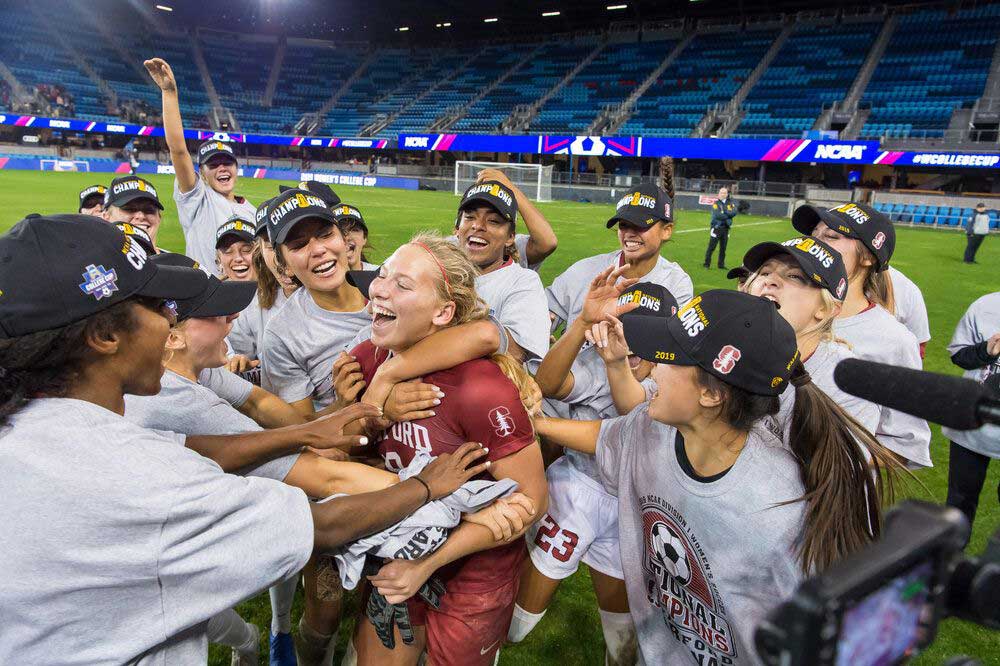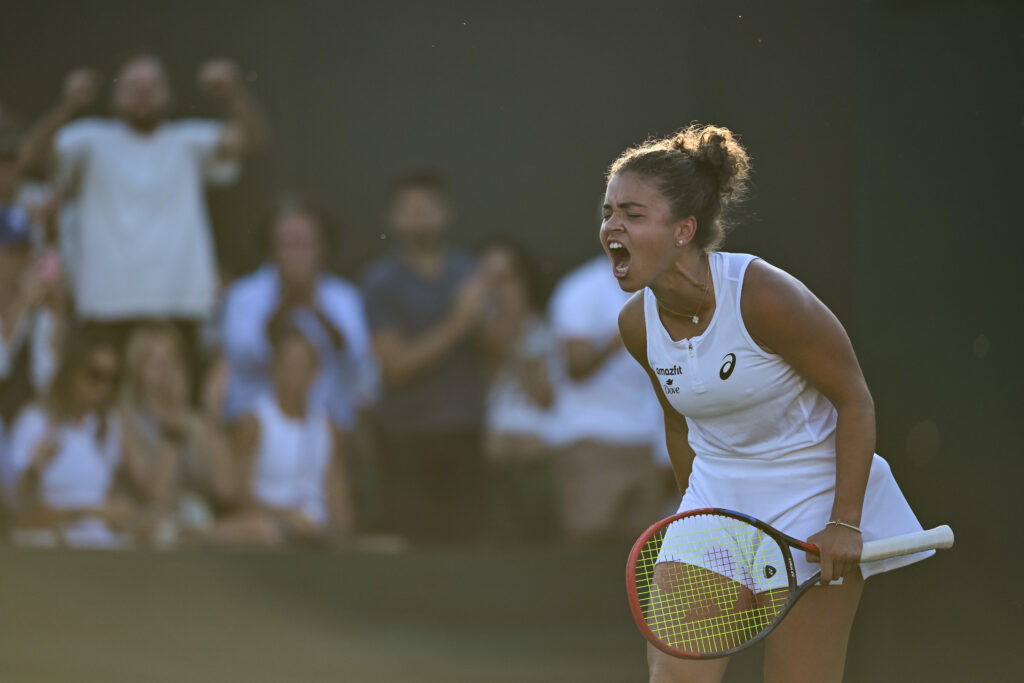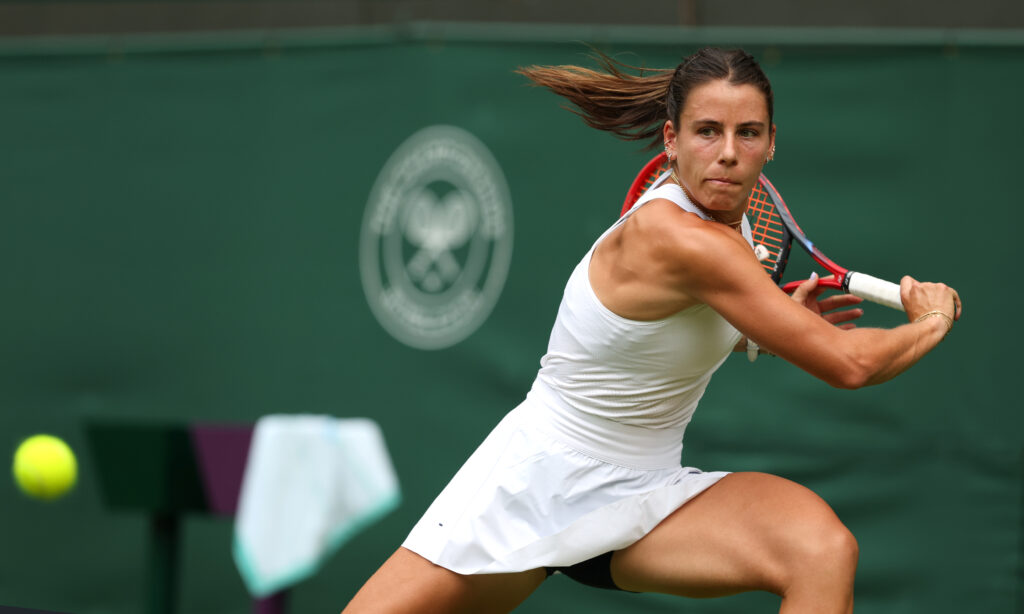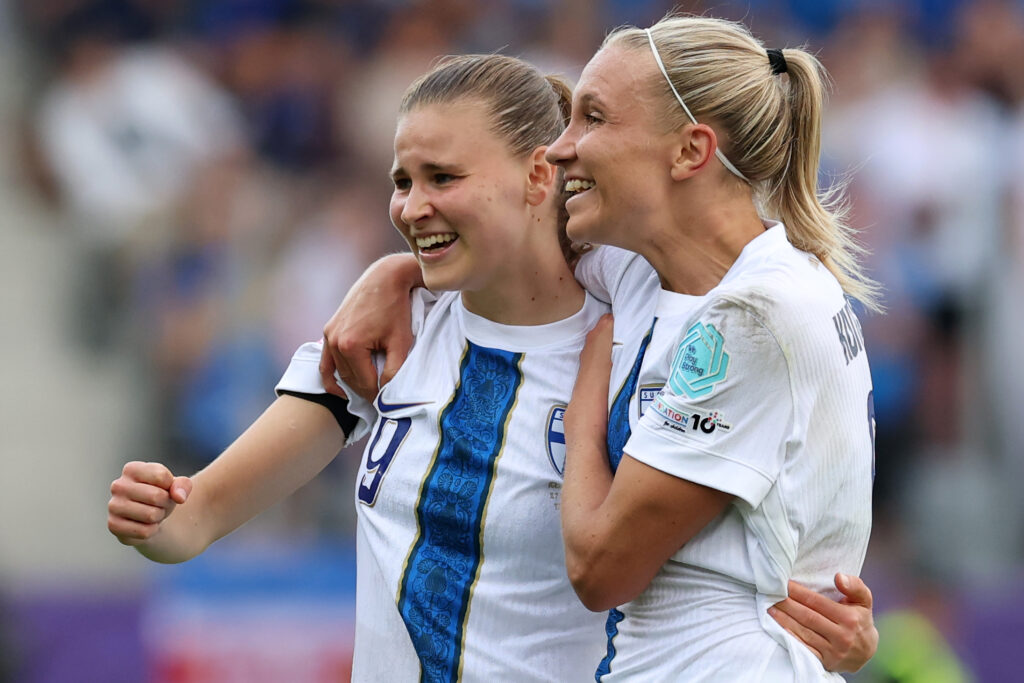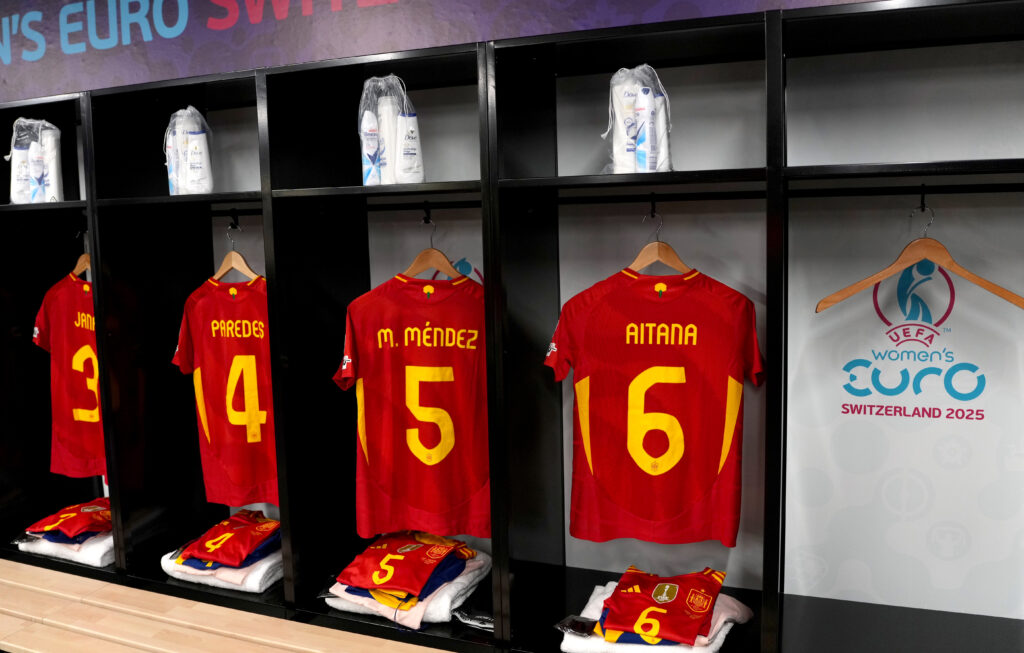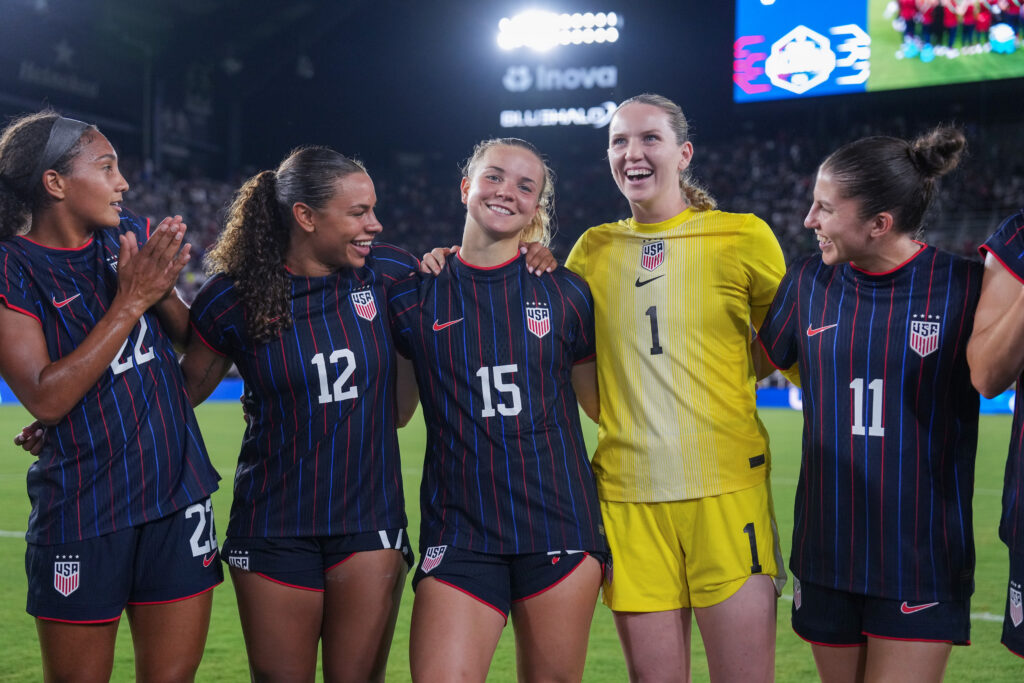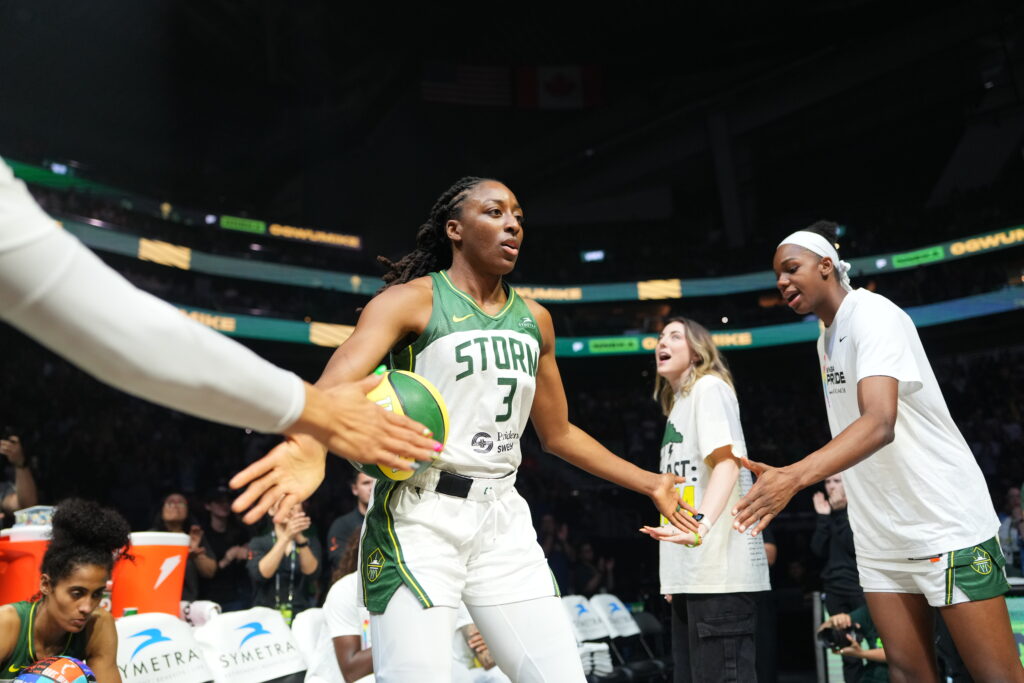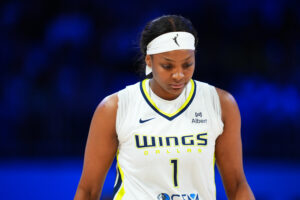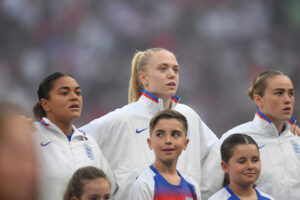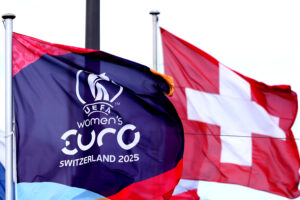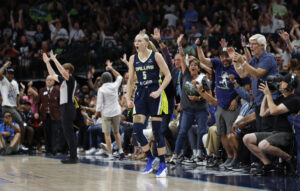In a penalty shootout against North Carolina, Katie Meyer made two critical saves to help Stanford win its third NCAA women’s soccer championship. Her celebration after the final save immediately went viral. Two days earlier, Meyer had sent the internet into a frenzy after trash-talking a UCLA player whose penalty shot she saved in their semifinal match. Just Women’s Sports caught up with Meyer to talk about that play, the national championship, and the politics of sportsmanship.
WHAT A SAVE ????????????#WCollegeCup | @StanfordWSoccer pic.twitter.com/egsmi9wu2M
— NCAA Soccer (@NCAASoccer) December 7, 2019
Can we set the record straight on that semifinal game against UCLA? The talk online was that you cussed at the player. I heard from others that’s not what happened.
No, that’s not what happened. There wasn’t a lot of context around that moment, which is why I wish it had stayed on the field. But here’s the deal: my defense has been insane all year, which means there have been a lot of questions about what I can actually do as a keeper. And in the seventh minute of the UCLA game, I let in a shot that I think I should have saved. As we’re huddling to regroup, Mia [Fishel, UCLA player] runs by shouting, “We scored because of the keeper. It’s the keeper,” basically telling her team I was the weak link, which, when you’ve just let in a soft goal, isn’t super exciting to hear.
So then right before the half, Mia takes a PK, and I save it. Had any other player taken the PK, I wouldn’t have said anything. But she’d been talking, so I talked back. I asked her, “Is it the keeper? Is it the keeper?” I wish it had stayed on the field, but it didn’t. Mia’s a great player. I’ve known her for a while, and we’re competitive. We get heated in the moment, just like guys do. And we’ll play each other again.
Did you look at any of the things people were saying online afterwards?
I had to delete Instagram and Twitter from my phone after the game. We were playing for a championship in two days, I didn’t have time to mope around and be like, “Oh no, people on Twitter don’t like me.” When I finally re-downloaded the apps, some of it was definitely hard to read, because I do want to be a role model for little girls. I want to show them that hard work and dedication can empower them to do whatever they put their mind to. So I do actually care about what a mom in Wyoming has to say. To be fair, there were a lot of people who were super positive. There’s a community of women’s soccer fans on Twitter, and they were all supportive. And the reaction after the championship shootout was basically all positivity and excitement, which turned things around.
This is an ALL-TIME FLEX ????
— SportsCenter (@SportsCenter) December 9, 2019
(via @ESPNFC)pic.twitter.com/auXulcXNzq
People were still debating whether your celebration crossed the line during the championship game. There was a lot of talk about how female athletes are expected to act. What are your thoughts?
It’s almost disappointing that a display like that is considered so extreme. Men in sports celebrate all the time, and I get that guys also get bad reactions from fans and people online. But going forward, I hope that if girls react that way again, which they will, because women are fierce, and everyone likes to play and be competitive — I hope the reaction stays positive. In the end, I’m happy a conversation was started about women being competitive because that’s what we are. We get heated in the moment. You can find that competitiveness anywhere, from lawyers, to moms, to someday, the future female president. People just need to take a step back and ask themselves, why do I think this? Why am I so shocked by a woman showing her passion?
There are girls everywhere who have been forced to say, “Oh, I’m a tomboy.” No, you’re a strong girl. You’re a passionate girl, and that’s totally fine. And you’re going to stay that way, because we need it.
Especially in sports. I mean, if you’re not allowed to get fired up then, I don’t know when you can.
Exactly. I don’t know what people wanted me to do. A lot of people were saying, act like you’ve been there before. Well, I’m 19, I haven’t. The most competitive soccer game I’d ever played in before that was an international friendly, years ago. And this was for all the marbles.
I also just think there should be more joy in the game. You see all these scorers celebrating their goals, let a goalkeeper celebrate their save. On the practice field every day, we talk to each other, we make jokes, we get competitive, it’s loud. That’s where the fun comes from. And if it makes it more entertaining to watch, great. And if you hate it, turn off the TV. But if there’s a day where I don’t feel that amount of joy after saving a PK in the championship game, I’ll stop playing. I’ll go to law school.
For people who haven’t been in those kinds of moments, can you explain what it’s like?
That moment meant so much to me because of my journey leading up to it. My reaction came from all the work that went into that championship and all the joy I have for the sport. You’re looking at a girl who was cut from her first club team, who didn’t make the U17s World Cup roster a few years ago, redshirted last year. You have all these ups and downs in your soccer career and then you get the big yes, and you know this is exactly what you are supposed to be doing. There’s no purer joy.
Even though Stanford looked like the better team in regulation, the game still went into PKs, which are always a bit of a toss up. What was your mindset going into that?
I had the utmost confidence going into that shootout. I told my teammates we we’re going to come out on top. Hit your PK like you know it’s going in, because it is. Claudia Dickey [UNC’s goalkeeper] did phenomenal. But it went our way, and I don’t think it was luck. I think that it was everything that this team put on the line to get to where we were. We knew before the game that the outcome had already been decided. We just had to go out there and do it. And when you have a team that truly believes that, I don’t think you can fail.
For you personally, where does that kind of positive energy come from?
It comes from my parents, first and foremost. I can still remember my dad taking me to the parking garage in the mall so we could run up the incline with parachutes on. Him and my mom just dumped everything into my sisters and I. So it’s them. It’s my teammates. It’s watching Sophia Smith come back from an injury that, with anyone else, I don’t know if they keep playing or not, but she came back with grace. It’s people like Civana Kuhlmann. She tore her ACL in an exhibition game and didn’t get to play a minute this season, but she stayed one of the most positive people on the team. It’s everyone. When people around you pour that belief into you, you give it back to them. And it comes out in the purest joy, in that childish love for the game that I think is deep inside every soccer player.
Looking back, what stands out about Championship weekend?
It was the best weekend of my life. It was all a whirlwind. It’s been a few weeks and I’m still waking up thinking, did it really happen that way? But that’s how the season ended, and no one can take that from this incredible team and coaching staff, ever. It’s crazy, and it’s rewarding. The fact that I could contribute to us winning the championship — there’s no greater feeling.
